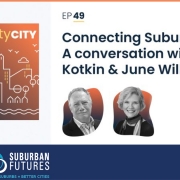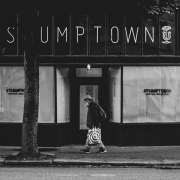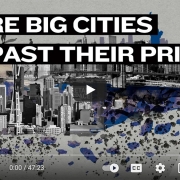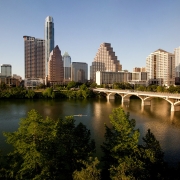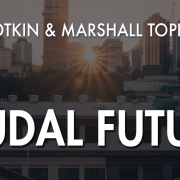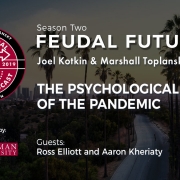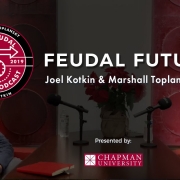Connecting Suburbia: A Conversation with Joel Kotkin and June Williamson
By: June Williamson
At: Three Sixty City
Two of the world’s sharpest thinkers in design and demography discuss ways to make suburbs better: Joel Kotkin joins June Williamson to discuss some of the challenges of the sprawling suburbs, and how the thoughtful design and retrofit of low density neighborhoods could lead to more connected, equitable and environmentally sustainable futures.
JW: …So, let’s start at the beginning. Could you share with listeners your take on the history of suburbs in Northern America, and how they came to be dominated by a pattern of low-density, car-centric development, where areas are often strictly separated by use? The residential areas are located away from commercial areas and there’s even separation within commercial areas and so forth?
JK: Well, basically what made this happen in large part is what the people want, and what could they afford? I mean, it’s not that complicated. So what did people want, and particularly people with families, and people when they get older. I still think that for a certain portion of the under 30-35, the city is always attractive. I remember years ago, when I would visit New York, which is my hometown, but I’ve lived in California a long time now. And I would go there, and I could walk to family, friends, high school friends, college friends, all in Manhattan, and not one of them is there today. And they were gone by the time they were 35-40 at the oldest. That tells me that people end up making a decision, particularly if they have kids, that they want to go someplace where there’s a backyard, and maybe it’s a little bit safer. Now, I think the other part of your question, why did it take in some sense a not very attractive form architecturally. The reality is that suburbs were built very quickly, it’s like a lot of things. You think about a Levittown, I mean, this was done by former Seabees who had served in the war, they had been making huge bases in islands in the Pacific, and they used some of that same technology to do it.
We now can look back at it and say, it was too much carbon emissions, or it was too separated by class and race. But for many people, and particularly for the American working class, initially the white working class, this was a liberation from the city. I’m old enough to have a mother who grew up in the slums in Brownsville, New York. And hopefully, this won’t offend anybody, but she always used to say it was a shitty neighborhood then, and it’s a shitty neighborhood now, my mother passed away last year. For her moving to the suburbs was a dream, to have a backyard, to have trees, to hear birds all the time, to know that my brother and I were going to a safe high school, it was a encouraging environment. So what’s happening today is very interesting. On that ethnic basis, that’s changed. 96% of all the growth in suburbia last decade was among non whites.
Read/download the rest of the transcript at New Cities.

